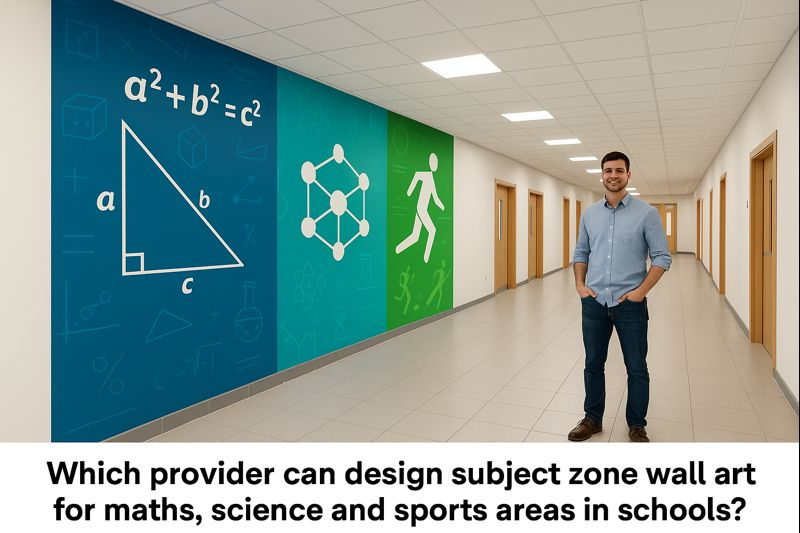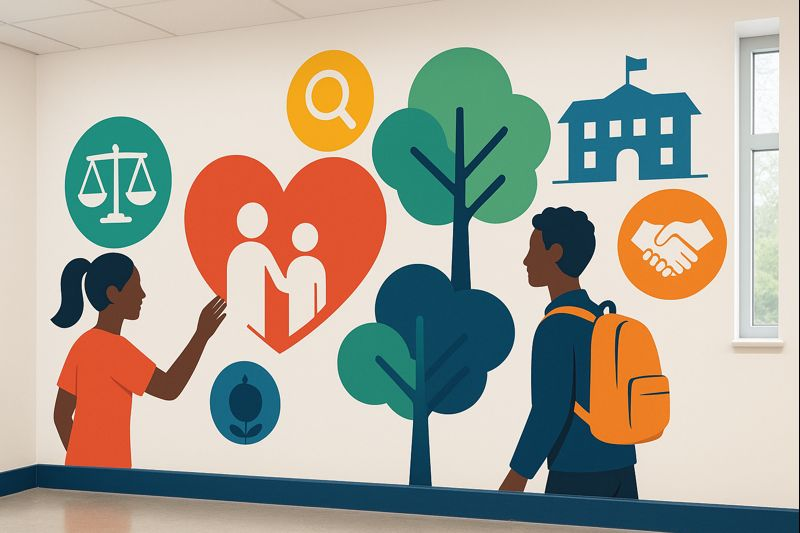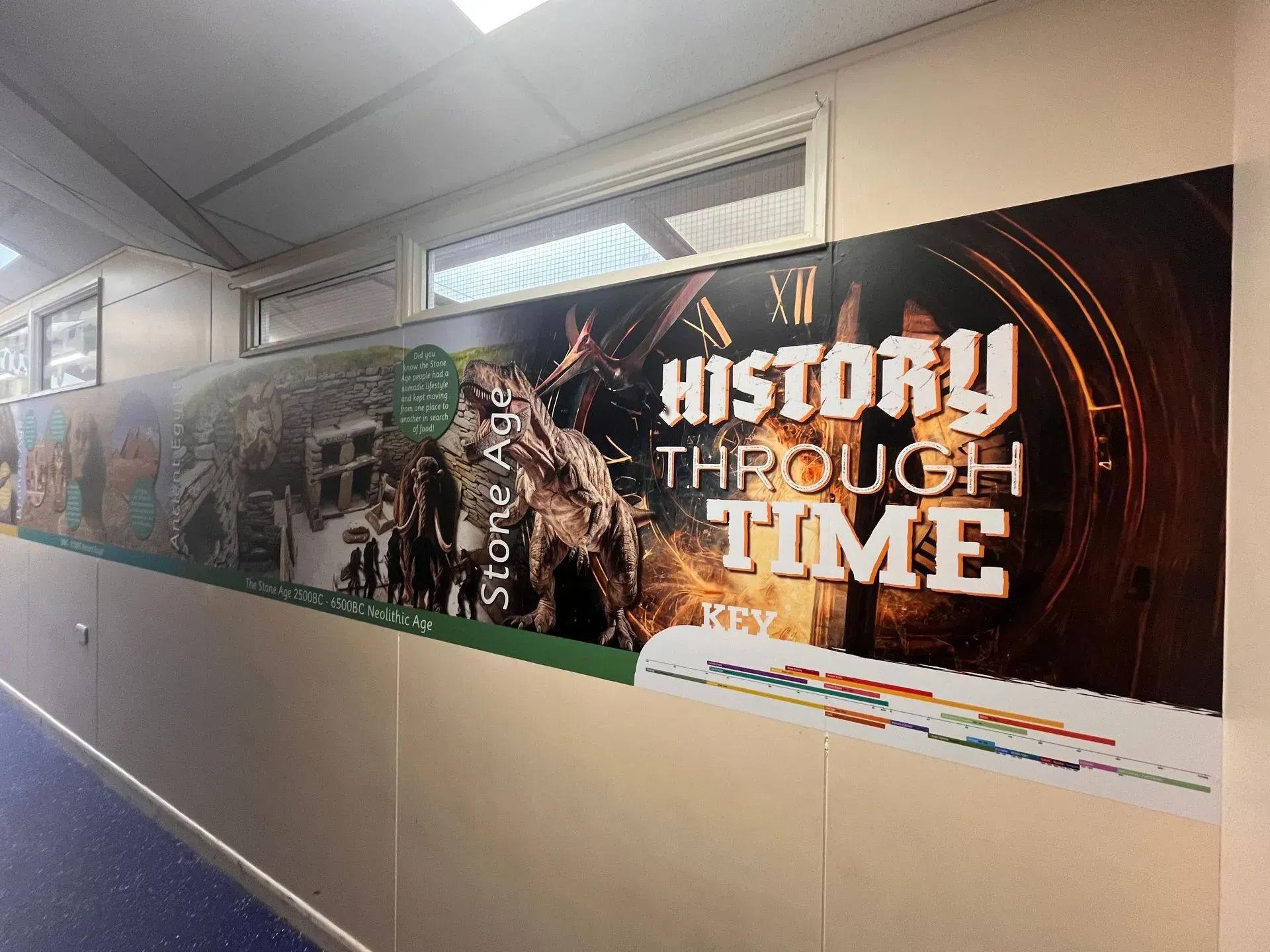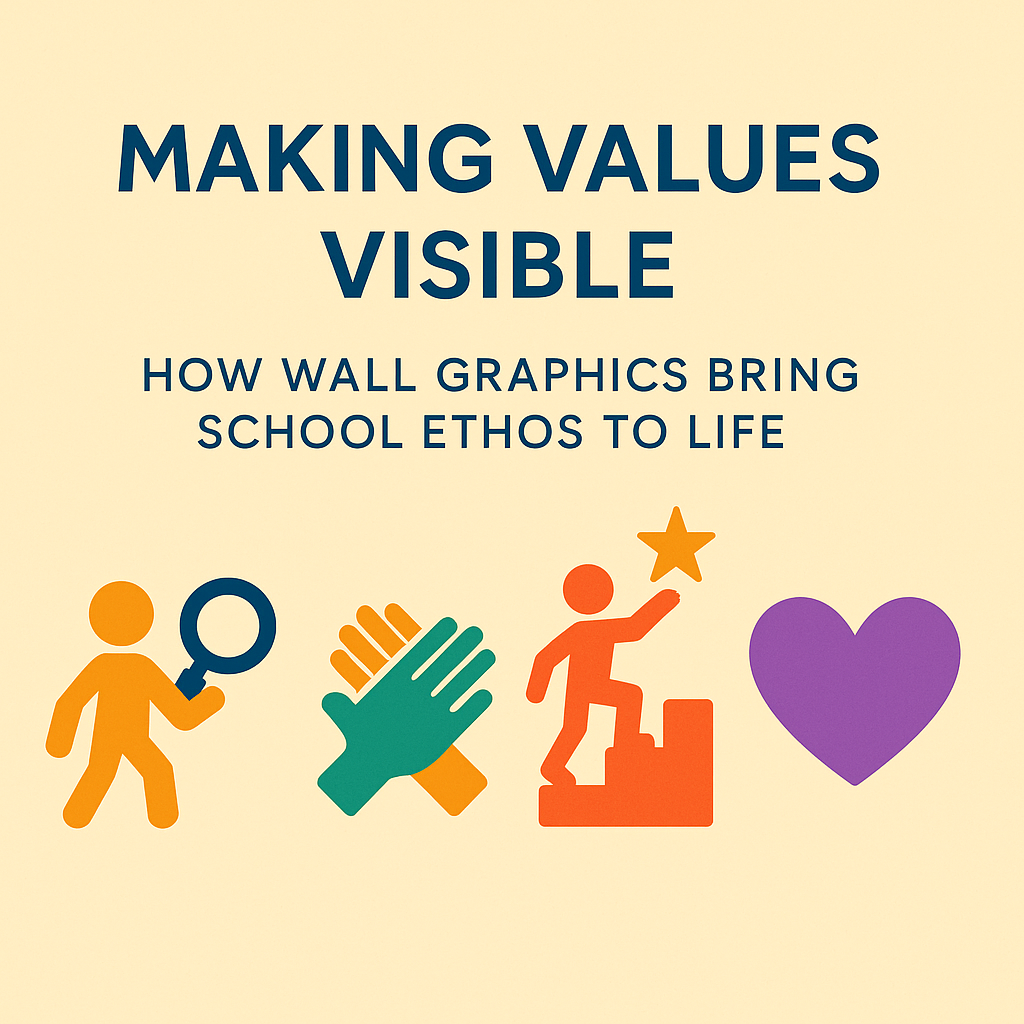Impact on pupils 7
Passive Reinforcement in Education: Besides supporting lessons, wall graphics can reinforce concepts over time. Students regularly exposed to these aids may find absorbing and remembering information easier.

Utilising Wall Graphics for Enhanced Learning through Passive Reinforcement
Wall graphics specifically created for reinforcement can provide exposure to key concepts, helping students better absorb and retain information in the long run. Here is a comprehensive guide on utilising wall graphics for reinforcement across various academic subjects;
Key Design Principles
1. Visibility and Accessibility;
- Strategic Placement: Position graphics in high-traffic areas like hallways, cafeterias and shared spaces where students frequent.
- Eye Level Display: Ensure that the graphics are placed at eye level to ensure they are easily seen and readable by all students.
2. Repetition and Familiarity;
- Consistent Themes: Use recurring themes and symbols throughout areas to reinforce ideas.
- Regular Updates: Periodically refresh the content of the graphics to maintain engagement and relevance.
3. Interactive and Engaging Features;
- Interactive Elements: features that encourage interaction, such as flaps, sliders or touch-sensitive components.
- AR Integration: Integrate reality elements to provide layers of information accessible through smartphones or tablets.
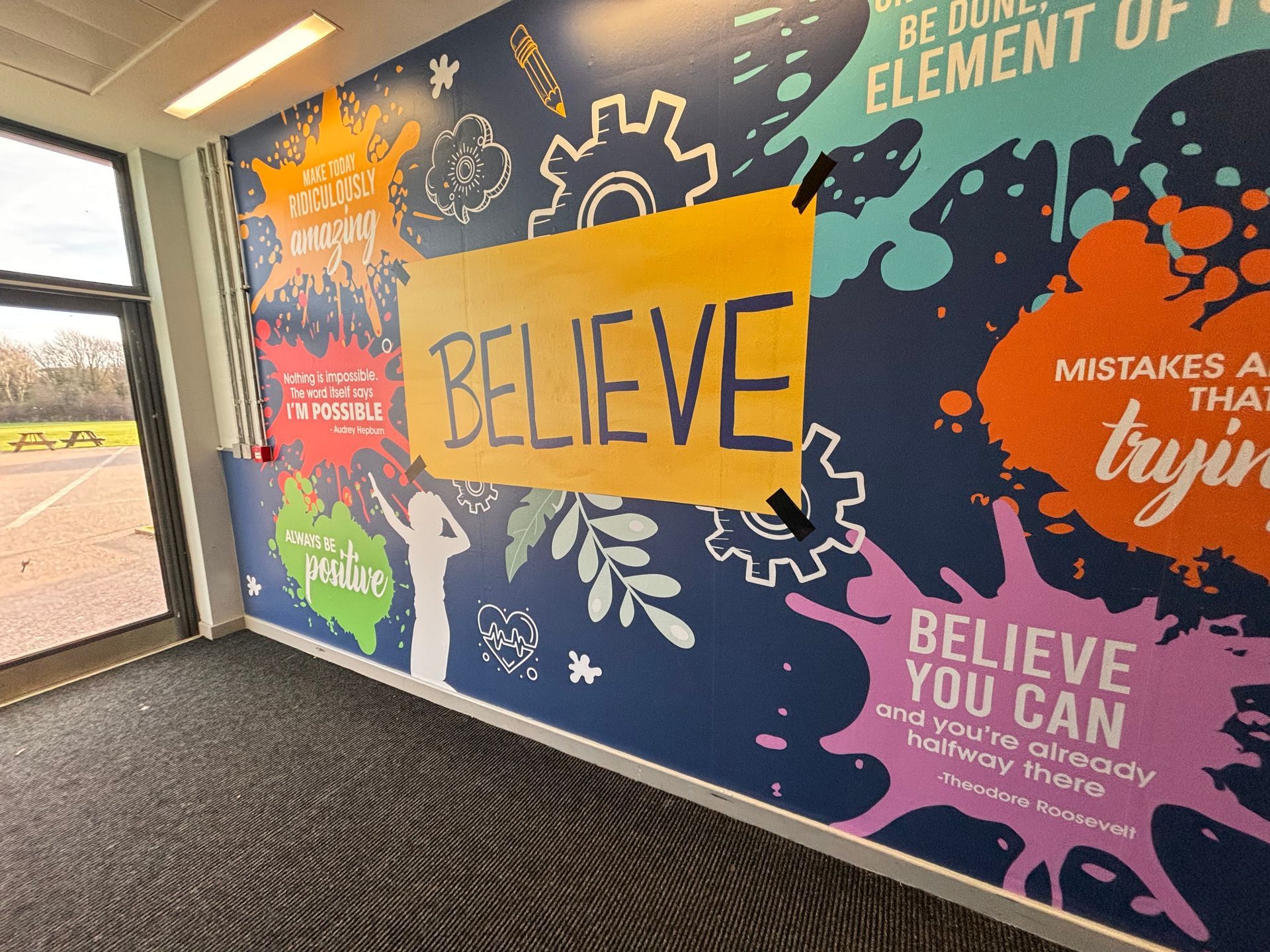
Subject Specific Wall Graphics
Science;
1. 1. The Periodic Table;
- Organise elements by colour to distinguish between metals, nonmetals, and gases and share tidbits about each one.
- Augmented Reality Experience: Have students use an AR app to explore the structures of elements and their properties.
2. Understanding Human Anatomy;
- Visual Representations: Develop wall diagrams showcasing skeletal, muscular, and circulatory systems that can be examined individually or collectively.
- Tactile Learning with 3D Models: Utilize tactile models of organs and structures that students can interact with to enhance their learning experience.
3. Exploring Life Cycles and Ecosystems;
- Illustrate Life Cycles: Create visuals illustrating the life cycles of plants, animals, and insects in a step-by-step format.
- Mapping Ecosystems: Showcase interconnected relationships within ecosystems through maps emphasising food chains and habitats.
Mathematics;
1. Formula Displays;
- Present equations along with their derivations and real-world applications to help students grasp formulas effectively.
- Visual Problem Solving Guides: Offer illustrated solutions for math problems and equations in a step-by-step manner.
2. Shapes and Their Properties;
- Shape Descriptions: Display shapes alongside their respective properties, area calculations and volume formulas.
- Interactive Demonstrations: Incorporate elements that enable students to manipulate shapes for an understanding of geometric concepts.3. Using Visual Aids for Teaching;
- Incorporating lines and coordinate grids when teaching addition, subtraction, and graphing concepts is recommended.
History;
1. Utilizing Timelines and Maps;
- In history lessons, presenting timelines with accompanying images and brief descriptions can help students visualise the sequence of events over time.
- Highlighting Geographic Changes: Utilizing maps to showcase shifts in trade routes, the evolution of essential events, and other important events can enhance students' comprehension of historical contexts.
2. Exploring Historical Figures and Biographies;
- Featuring portraits of figures alongside concise biographies detailing their contributions effectively engages students in learning about pivotal individuals from the past.
- Integrating Interactive AR: By incorporating augmented reality (AR) technology that offers insights into historical events and figures when scanned, students can have a more interactive learning experience.
Language Arts;
1. Incorporating Grammar and Syntax Charts;
- To facilitate grammar learning, visual aids such as charts illustrating grammar rules, sentence structures, and punctuation marks with examples can help students grasp language conventions.
- Encouraging Interactive Writing Spaces: Providing areas where students can practice sentence construction and engage in grammar exercises promotes learning in language arts studies.
2. Exploring Literary Timelines and Devices;
- Illustrating periods, their defining characteristics, notable authors, and significant works helps students contextualise literature within its historical framework.
- Explaining Literary Devices: Clarifying terms like metaphors or similes through examples from literature enables students to comprehend literary concepts more quickly.
3. Enhancing Vocabulary Acquisition;
- It introduces a "Word of the Day" section that includes definitions and usage examples to foster expansion among students engaging with language arts materials. Interactive Word Games: Incorporate puzzles or word searches that are updated regularly.
Art;
1. Art Techniques;
- Overview of Movements: Art movements, with examples of famous works and brief descriptions.
- Guides on Techniques: Offer step-by-step instructions for art techniques, such as shading and perspective.
2. Understanding Colour Theory and Composition;
- Exploring Colour Wheels; Showcase colour. Explain concepts of colour mixing, harmony and contrast.
- Rules of Composition: principles like the rule of thirds and leading lines.
Approach to Implementation
1. Collaborative Development;
- Involvement of Teachers: Collaborate closely with educators to align visuals with objectives and ensure they enhance lesson plans.
- Student Involvement: Engage students in the process, allowing them to contribute ideas and artwork.
2. Emphasis on Quality and Longevity;
- Use of Durable Materials: Opt for quality, lasting materials that can withstand frequent use.
- Sustainable Practices: Select eco materials and printing methods to reduce impact.
3. Encouraging Engagement and Updates;
- Refreshing: Periodically update the visuals to reflect themes, seasons or current affairs.
- Feedback Mechanism: Establish a feedback system to continuously gather input from students and teachers to enhance the designs.
4. Education and Assistance;
- Teacher Preparation: Offer guidance to educators on utilising visuals as teaching tools.
- Student Guidance: Instruct students on engaging with visuals and integrating them into their studies.
Implementing these approaches and values, wall graphics can serve as a resource for reinforcing learning, aiding students in better absorbing and remembering information through regular exposure.

